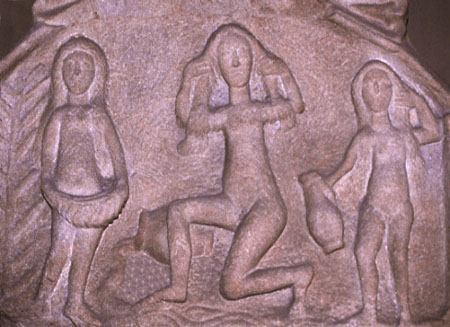Nymphs
| Line 4: | Line 4: | ||
Nymphs were associated with sources of fresh water, springs, grottos and especially with healing springs. The grotto alludes to a cthonic character and thus they had a divinatory aspect as well. | Nymphs were associated with sources of fresh water, springs, grottos and especially with healing springs. The grotto alludes to a cthonic character and thus they had a divinatory aspect as well. | ||
| − | Famous nymphs are Juturna, Furrina, [[Egeria]], and the Camenae who were later assimilated to the Greek Muses. | + | Famous nymphs are Juturna, Furrina, [[Egeria]], and the [[Camenae]] who were later assimilated to the Greek Muses. |
In Roman iconography nymphs are depicted as young women with shells or hydria. | In Roman iconography nymphs are depicted as young women with shells or hydria. | ||
Revision as of 02:17, 29 February 2008
Nymphs were native Italic water goddesses. The Latin term is lymphae but in inscriptions the Greek term nymphae was always used.
In Italy there were cults of fountains and springs. Nymphs were associated with sources of fresh water, springs, grottos and especially with healing springs. The grotto alludes to a cthonic character and thus they had a divinatory aspect as well.
Famous nymphs are Juturna, Furrina, Egeria, and the Camenae who were later assimilated to the Greek Muses.
In Roman iconography nymphs are depicted as young women with shells or hydria.

The native Italic deity Neptunus was also the god of fresh and running waters and there exist many inscriptions to Neptunus and the nymphae.
[references Larson "Nymphs" Green "Roman Religiona and Cult of Diana at Aricia"] ,